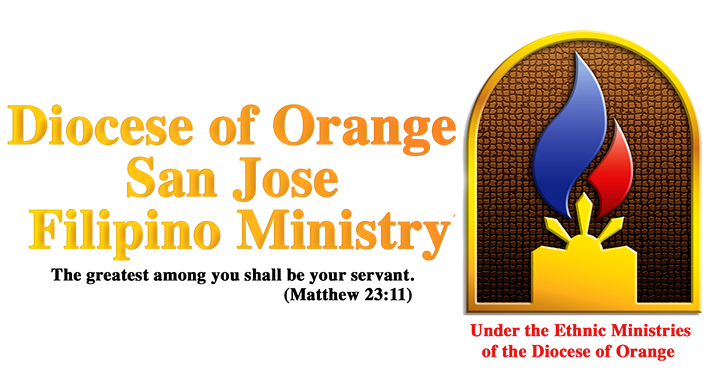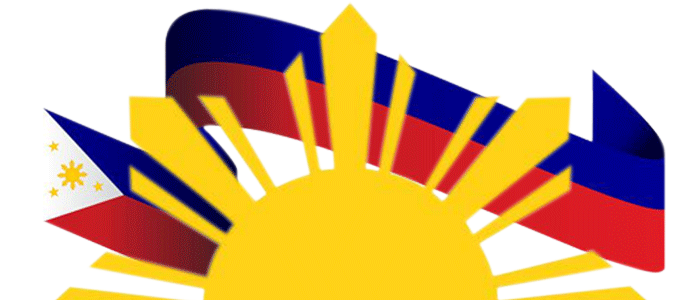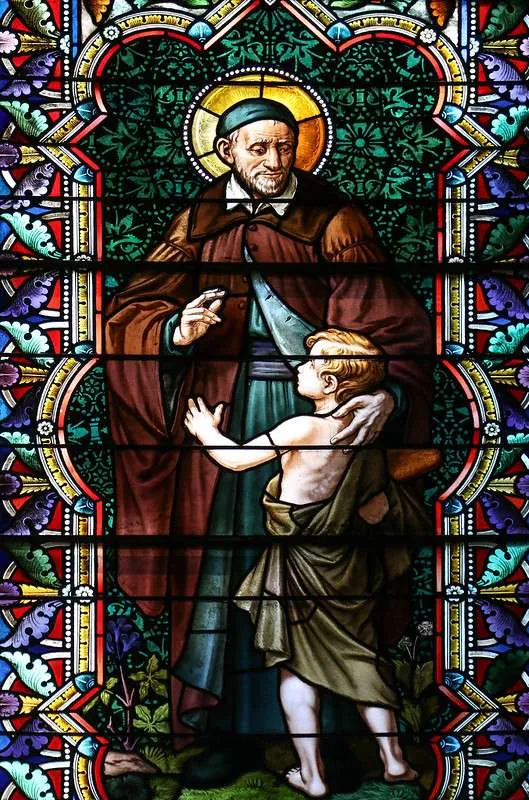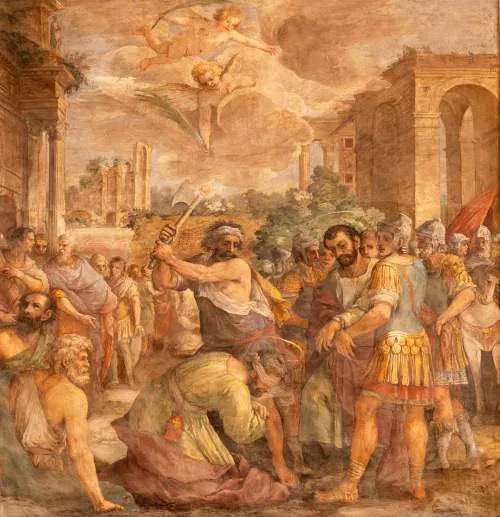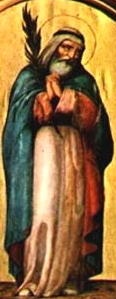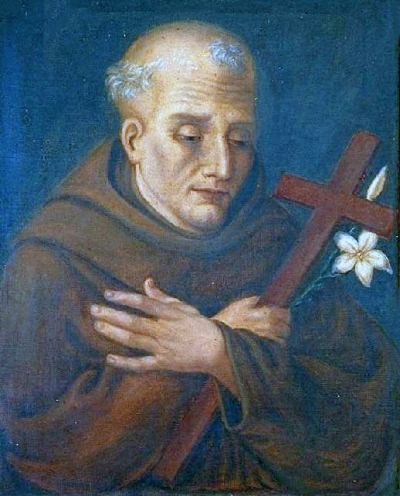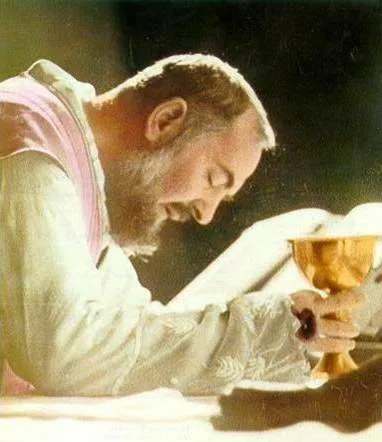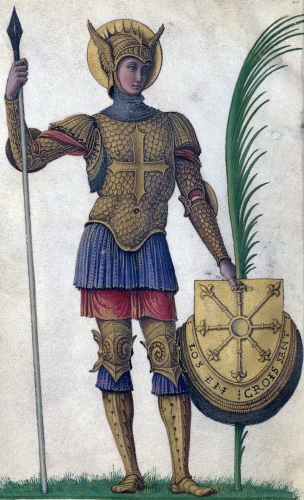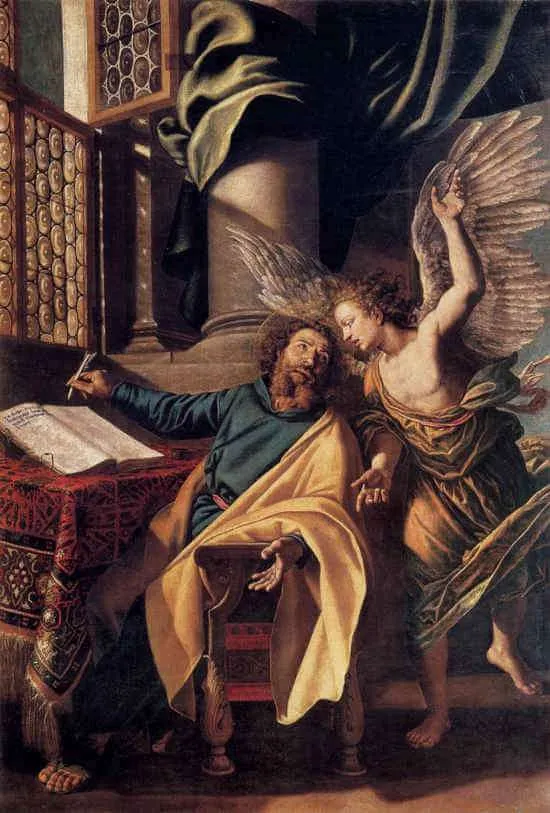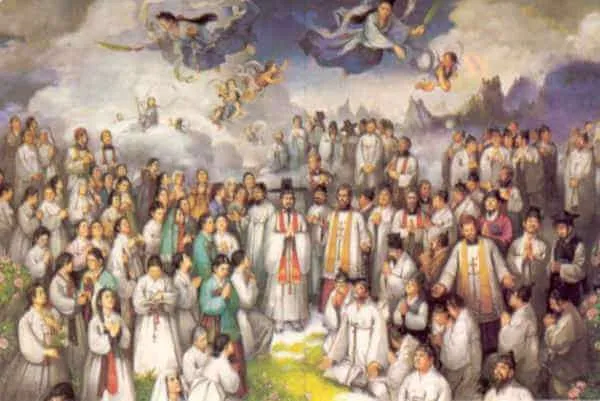St. Vincent de Paul
c. 1581–1660; Patron Saint of charitable societies and workers, horses, hospitals and hospital workers, lepers, lost articles, prisoners, spiritual help, and volunteers; Canonized by Pope Clement XII on June 16, 1737
Vincent de Paul was the third of six children born to peasant farmers in the village of Pouy in the Kingdom of France, about 100 miles north of the border with the Kingdom of Spain. As a child, he worked the fields and tended the livestock, but he also showed great intelligence. Although he was quite devout as a child, he was ashamed of his poverty and longed to advance in society. He later shamefully admitted that he was even embarrassed by his father when he was young: “I was ashamed to walk with him and to acknowledge him as my father because he was badly dressed and a little lame.” Vincent’s father, however, was not ashamed of Vincent and saw much promise in him. When Vincent was a young teenager, his father sold an ox so that he could send his son to be formally educated.
Vincent was sent to the seminary in Dax, a town about 100 miles to the west, where he lived with the Franciscan Friars. A few years later, he was sent to the University of Toulouse to study theology and was ordained a priest at the age of nineteen or twenty. (Note: Some historians believe he was born in 1676 rather than 1681, so it’s possible he was ordained at age twenty-four or twenty-five.) Since he might have had to receive a special dispensation for such a young ordination, he remained in Toulouse to complete further studies in theology and canon law. During his time at the university, he paid for his studies by working as a tutor.
In 1604, Father Vincent received an inheritance from a wealthy woman and traveled to Marseilles to sell the property. Marseilles was about 200 miles to the east of Toulouse by foot but could be reached much more quickly by boat. After selling the property, he was invited by a man to accompany him by boat to the port of Narbonne. Traveling by boat was known to be dangerous since many North African Muslim pirates patrolled those waters, looking for men to enslave. Father Vincent decided to sail to Narbonne because the wind was in their favor and the trip should be quick. However, pirates did intercept them, attacked the boat, killed some onboard, and injured everyone else. Father Vincent received an arrow in his shoulder. Once captured, they were taken to the North African port of Tunis, in modern-day Tunisia, where they were humiliated, treated like animals, and sold. Father Vincent reports that over the next two years he was bought and sold multiple times. Finally, he was sold to a master who was a Franciscan priest turned Muslim, having renounced the Catholic faith to win his freedom. Father Vincent won him over, helped him convert back to the faith, and together, they escaped.
Father Vincent’s imprisonment profoundly affected him. One of his motivations for priestly ordination was to escape poverty as a peasant farmer and lead a more comfortable life. Being a slave transformed him. His faith deepened, and his concern for the poor and suffering grew. Perhaps more than the seminary, his captivity molded him into the saint he became.
After returning to France from two years in captivity in 1607, Father Vincent met Monsignor de Berulle (later Cardinal Berulle), and traveled to Rome with him where he continued his studies. Monsignor de Berulle was an influential writer often credited as the founder of what came to be known as the French School of Spirituality, a movement that focused on fostering a deep personal relationship with Christ, apostolic works, deep devotion to the Blessed Virgin Mary, abandonment to the will of God, and reliance on the work of the Holy Spirit. This movement would influence many future saints, including Father Vincent.
In 1609, he was sent back to France to help coordinate almsgiving for Queen Marguerite of Valois. Father Vincent served her briefly, but it was a fruitful period during which he realized the good that the wealthy could do for the poor. In France, he also became a pastor and entered the service of the wealthy and generous Gondi family. In 1617, he became their personal chaplain and tutor to their children. While serving them, he gave missions to the rural populations on their properties. The Gondi family also supervised the prisoners who served as rowers in the galleys of France. This connection allowed Father Vincent to start a ministry for these prisoners, who often had dire spiritual needs. He also formed the Confraternities of Charity, an association of laywomen from various social classes who provided physical and spiritual care to the poor and sick.
In 1625, to address the growing needs he observed, Father Vincent founded the Congregation of the Missions, later known as the Vincentians (or Lazarists). The congregation had begun the prior year when five other priests started assisting Father Vincent with his missions on the Gondi property. The group aimed to minister to the rural poor who, due to poorly trained and neglectful clergy, were spiritually deprived and lacked even a basic understanding of the Catholic faith. The new congregation embarked on a mission of catechesis, sacramental celebrations, and spiritual direction for these peasants. They also worked to meet the physical needs of the sick and poor.
Father Vincent and his fellow priests soon realized that a better long-term solution was to improve clergy formation. Therefore, in line with the recent decrees of the Council of Trent, the Congregation of the Missions began managing seminaries and offering ongoing formation to the clergy. By the time of his death, the congregation was running eleven seminaries. Roughly a century later, the Vincentians controlled about one-third of the seminaries in France.
Also in 1625, Father Vincent became the spiritual director of the widow, and later saint, Louise de Marillac. In 1629, Father Vincent invited Louise to work with the Confraternities of Charity. This collaboration proved fruitful. Over time, Father Vincent and Louise realized that many wealthier women in the confraternity struggled to personally care for the poor. They discerned a need for a congregation to take over this work, allowing the ladies of the confraternity to help in other capacities, such as fundraising. In 1633, they co-founded the Daughters of Charity who dedicated themselves to serving the poor in various capacities, including soup kitchens, hospitals, schools, orphanages, job training, and prison outreach.
For the next twenty-seven years, Father Vincent continued to expand the ministries God had inspired. At the time of his death, the Daughters of Charity, Confraternities of Charity, and Congregation of the Mission were all thriving.
Saint Vincent de Paul was a man of exceptional empathy who acted on that empathy, rather than just feeling it. He was an outstanding organizer who inspired many from every social class to follow him. He inspired seminarians, priests, men, women, the rich, poor, powerful, sick, and everyone else within his circle of influence. Just over 150 years later, Saint Vincent’s ministry continued to inspire, leading to Frédéric Ozanam’s founding of what is today known as the Saint Vincent de Paul Society, an international lay organization providing direct relief and compassion to the poor at local levels. This society inspires many, as do the Vincentians and Daughters of Charity.
As we honor this great saint, ponder the ways that you can put your empathetic heart into action. We are all called to care for the sick, poor, and suffering in various ways. We are all responsible to help share the Gospel with those God puts in our lives. Allow Saint Vincent de Paul to inspire you, as he has so many others, and do not hesitate to respond to that inspiration.
Source: https://mycatholic.life/saints/saints-of-the-liturgical-year/september-27–st-vincent-of-paul/
St. Vincent de Paul Read More »
